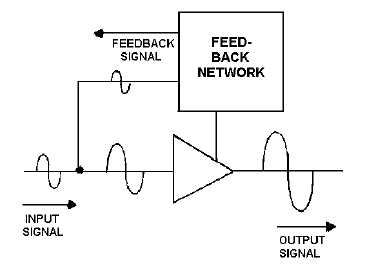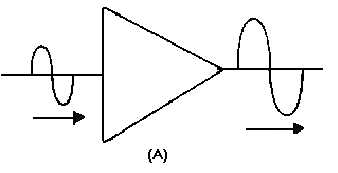1-19
Figure 1-16.—Negative feedback in an amplifier.
Sometimes feedback that is not desired occurs in an amplifier. This happens at high frequencies and
limits the high-frequency response of an amplifier. Unwanted feedback also occurs as the result of some
circuit components used in the biasing or coupling network. The usual solution to unwanted feedback is a
feedback network of the opposite type. For example, a positive feedback network would counteract
unwanted, negative feedback.
Feedback is also used to get the ideal input signal. Normally, the maximum output signal is desired
from an amplifier. The amount of the output signal from an amplifier is dependent on the amount of the
input signal. However, if the input signal is too large, the amplifying device will be saturated and/or cut
off during part of the input signal. This causes the output signal to be distorted and reduces the fidelity of
the amplifier. Amplifiers must provide the proper balance of gain and fidelity.
Figure 1-17 shows the way in which feedback can be used to provide the maximum output signal
without a loss in fidelity. In view A, an amplifier has good fidelity, but less gain than it could have. By
adding some positive feedback, as in view B, the gain of the stage is increased. In view C, an amplifier
has so much gain and such a large input signal that the output signal is distorted. This distortion is caused
by the amplifying device becoming saturated and cutoff. By adding a negative feedback system, as in
view D, the gain of the stage is decreased and the fidelity of the output signal improved.
Figure 1-17A.-Feedback uses in amplifiers.



